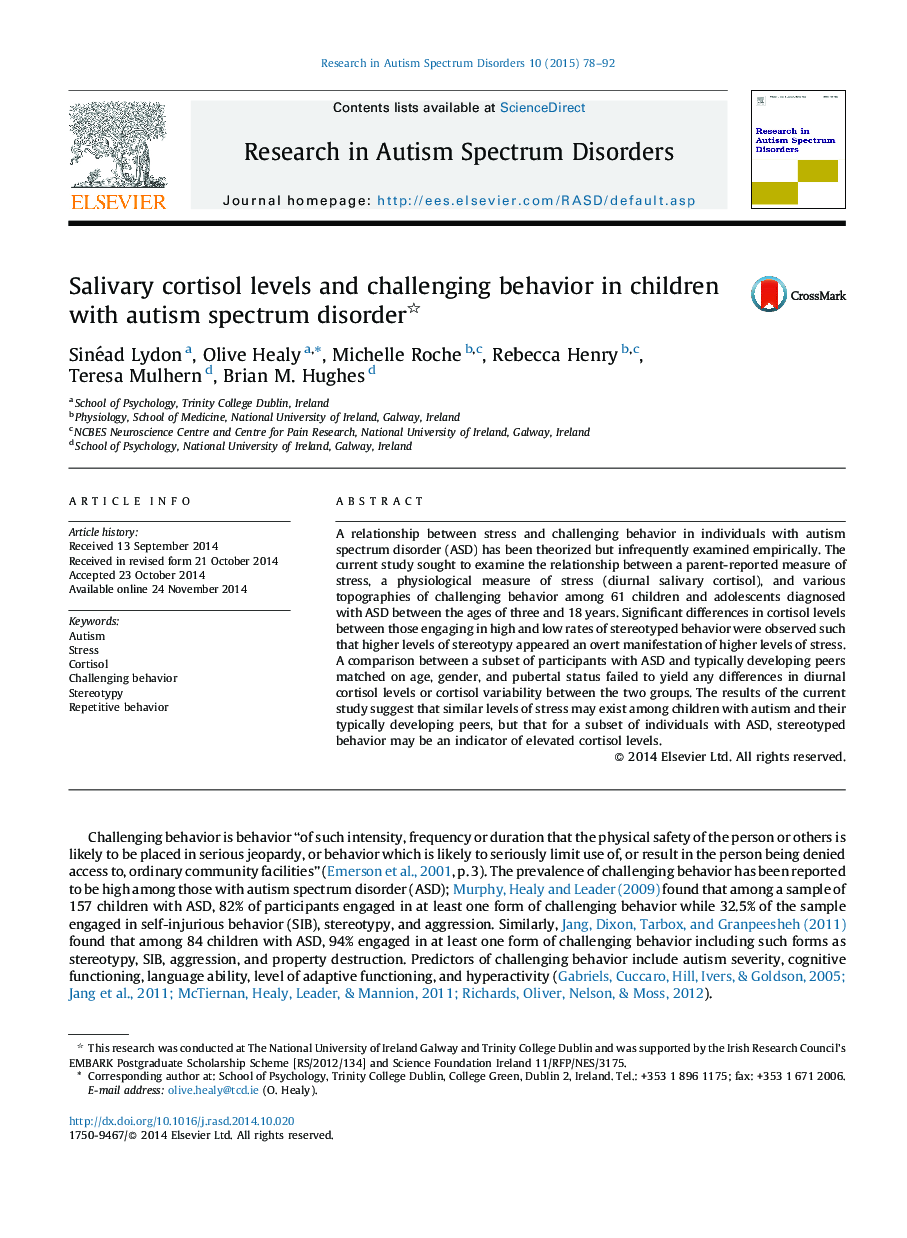| Article ID | Journal | Published Year | Pages | File Type |
|---|---|---|---|---|
| 370030 | Research in Autism Spectrum Disorders | 2015 | 15 Pages |
•Challenging behavior was examined in relation to measures of stress.•Cortisol levels differed according to high and low rates of stereotyped behavior.•Stereotyped behavior may be an indicator of elevated cortisol levels.•Diurnal cortisol levels did not differ between participants with ASD and controls.
A relationship between stress and challenging behavior in individuals with autism spectrum disorder (ASD) has been theorized but infrequently examined empirically. The current study sought to examine the relationship between a parent-reported measure of stress, a physiological measure of stress (diurnal salivary cortisol), and various topographies of challenging behavior among 61 children and adolescents diagnosed with ASD between the ages of three and 18 years. Significant differences in cortisol levels between those engaging in high and low rates of stereotyped behavior were observed such that higher levels of stereotypy appeared an overt manifestation of higher levels of stress. A comparison between a subset of participants with ASD and typically developing peers matched on age, gender, and pubertal status failed to yield any differences in diurnal cortisol levels or cortisol variability between the two groups. The results of the current study suggest that similar levels of stress may exist among children with autism and their typically developing peers, but that for a subset of individuals with ASD, stereotyped behavior may be an indicator of elevated cortisol levels.
